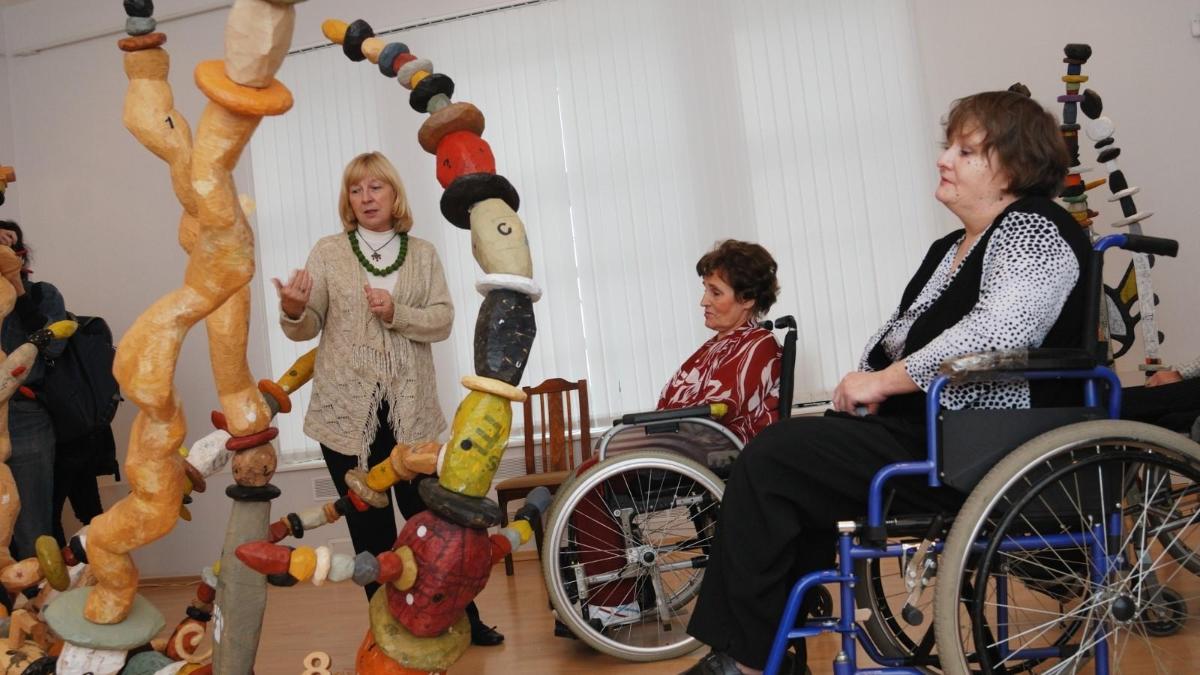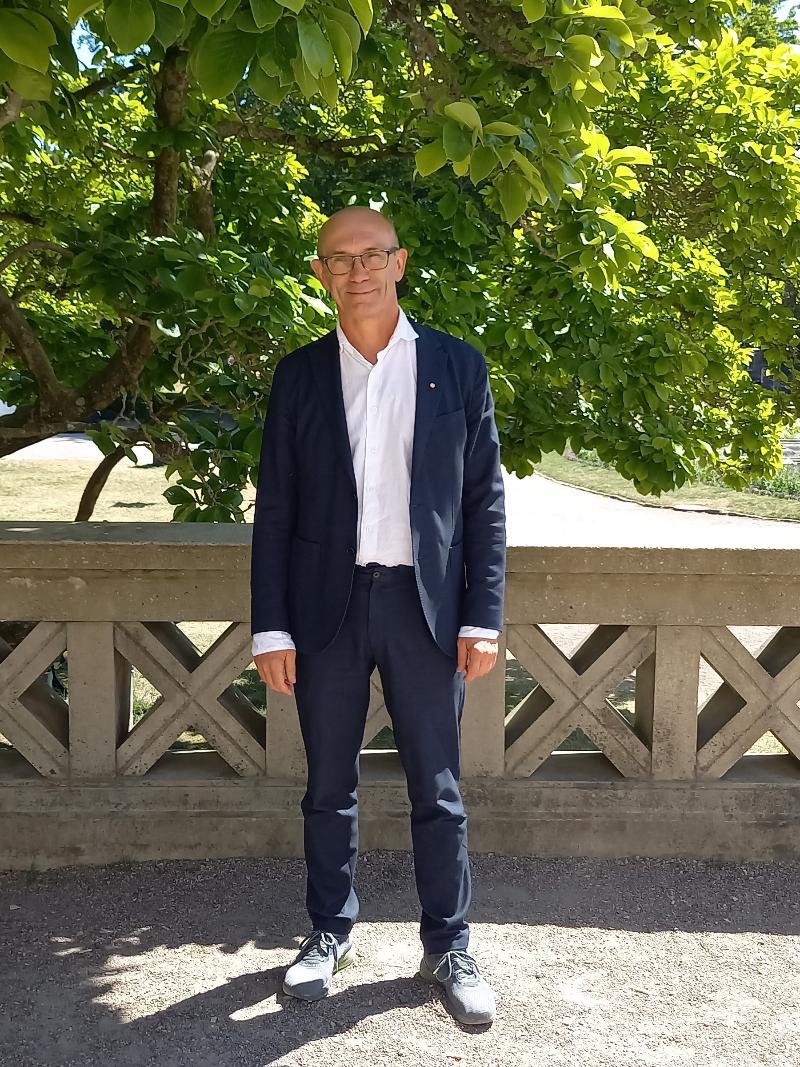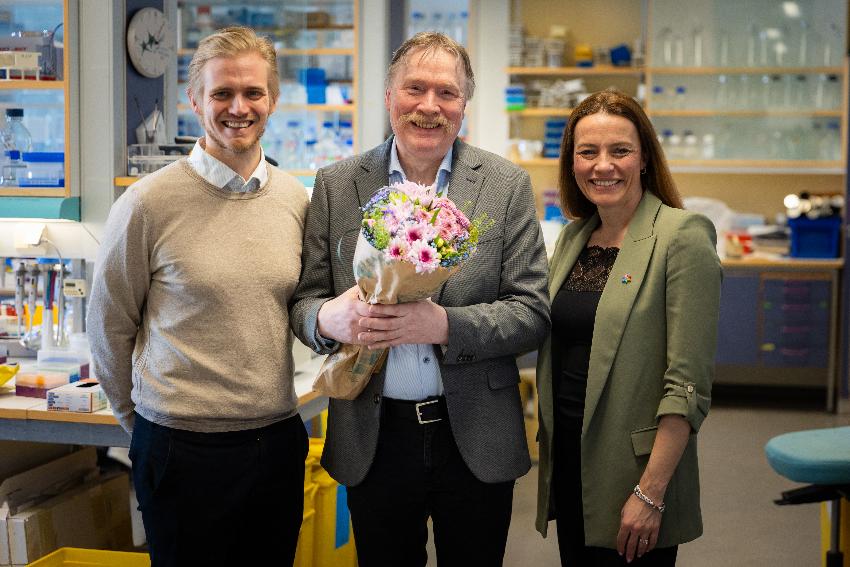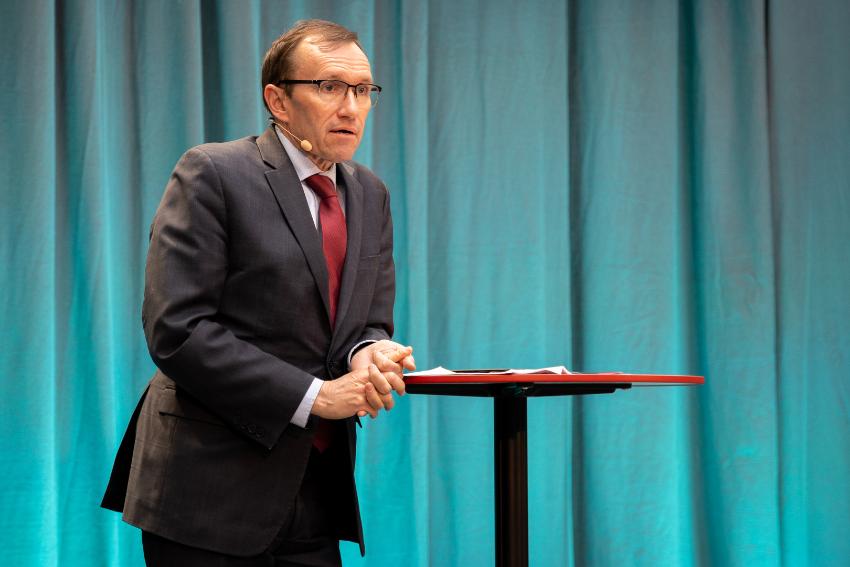Health initiative with low risk and low costs
Can art mediation provide medical benefits or broaden our perspective on what constitutes good health? Researchers at Lund University and UiT are now collaborating on a new project that builds bridges between the humanities and medicine.

Max Liljefors, professor of art history and visual studies at Lund University, is known for his research on the connections between art, philosophy, neuroscience, and medicine. Over several years, he has given lectures and courses on how art mediation can be used in a treatment context.
In 2024, Liljefors will enter into a new collaboration with colleagues at the University of Tromsø. The project is titled "Arts and Creative Health and Wellbeing". In this project academics with expertise in aesthetics and art and health researchers from both universities will hold joint courses and workshops.
The project has received seed funding from EUGLOH for implementation. EUGLOH is an alliance between nine European universities, which collaborate to facilitate short courses and teaching related to disciplines that deal with global health.
Opening doors for new oppportunities
The joint effort of UiT and Lund University involves training on how patients can be taken to art museums or how art exhibitions can be integrated into hospitals, where patients and others can participate in art walks. In such a way, art and aesthetic experiences can strengthen the feeling of well-being in everyday life.
Liljefors has previously led a course at a hospital in Sweden where health personnel from departments of geriatrics, psychiatry, and palliative care participated. He states that assessments made of the courses afterwards show that 90 percent of the participants responded that they have been able to immediately apply this knowledge and competence. The new EUGLOH course is not only aimed at health personnel but also at students.

“This project incorporates both medical and humanistic perspectives. It's about art, culture, and existential health where one makes use of art and aesthetic processes, in a whole range of activities in hospital departments, but also in everyday life. It is clear how it stimulates cognitive and perceptual abilities," says Liljefors.
Rita Sørly is the research coordinator at the Institute of Child Welfare and Social Work and a professor of social work at UiT. She is one of several staff members at the institute who have been invited by Lund University to collaborate on the new project.
“We are really looking forward to holding this course. What was enticing for us was an interdisciplinary approach to health and social sciences. The strength of Lund University is particularly directed towards the use of aesthetics in health and care sciences. Our strength is linked to teaching aimed at children and young people, and in social work. Together, this can be dynamite”, Sørly emphasizes.
In addition to Liljefors, she also has on her team professor of psychology and sports, Tony Ghaye, at Loughborough University, and department head Tanja Banjeri and coordinator Ellen Strømsøe, at the Department of Child Welfare and Social Work at UiT.
The project currently includes course activities over one year beginning in the autumn semester of 2024. Bachelor students from health sciences can enroll. The course will cover both theoretical perspectives on art, but also how art can be used in teaching, in a treatment situation, and in everyday life. Students also receive 5 ECTS points for participating in the course.
“I think it's very positive if we can reach beyond health and social sciences as well. I believe it can be useful also within teacher education and pedagogy. We are very positive about this and think that this may be a door opener to many new opportunities, with the support EUGLOH offers”, Sørly states.
Reasonable investment
Liljefors believes that this type of course is a reasonable investment for society when it comes to counteracting stress, creating well-being, and facilitating pain relief. Patients, and many other groups, may then perhaps in the long term receive a replenishment that will lay the groundwork for a richer inner life.
“It is particularly relevant for diseases and medical conditions that are developing rapidly in the Western world that cannot readily be handled with medical treatment”, Liljefors states.
According to Liljefors, this may concern stress-related burnout, mental illnesses, and dementia, which become more prevalent as the population ages.
“The World Health Organization has made calculations that show that the advantage of such projects is that they are characterized by being "low-cost" and "low risk". It does not cost much economically to implement and there is little risk of negative side effects, compared to some other types of treatments”, Liljefors concludes.
Sørly also sees many advantages with the project that is about to start. She points out that it is important to be able to offer alternative activities to patients who are in a challenging life situation.
“We know that the therapeutic work is eased if you do something practical together. It directs attention towards everyday coping and can give those who need it energy, joy, and surplus instead of focusing on illness and medication”, Sørly concludes.


